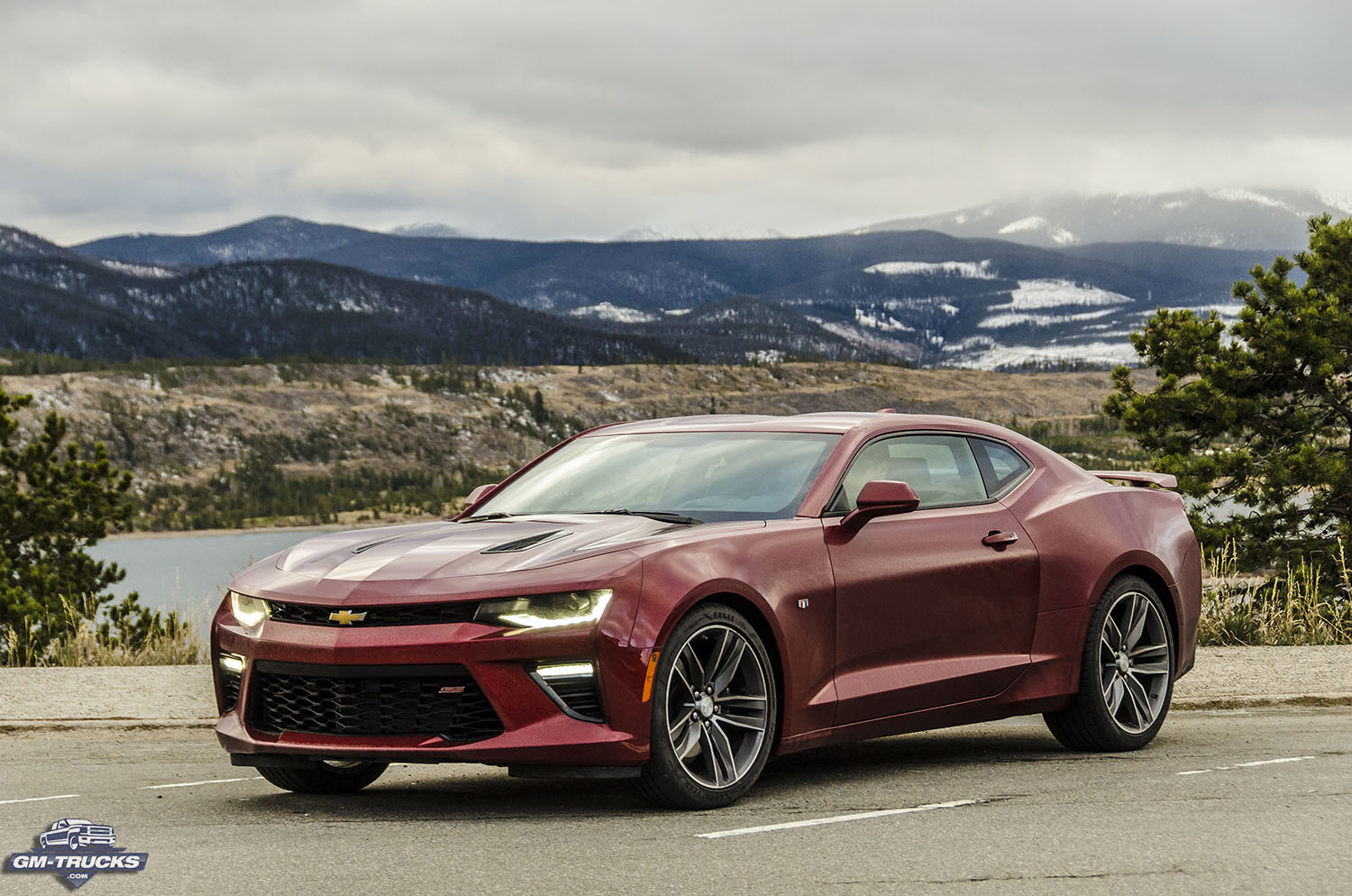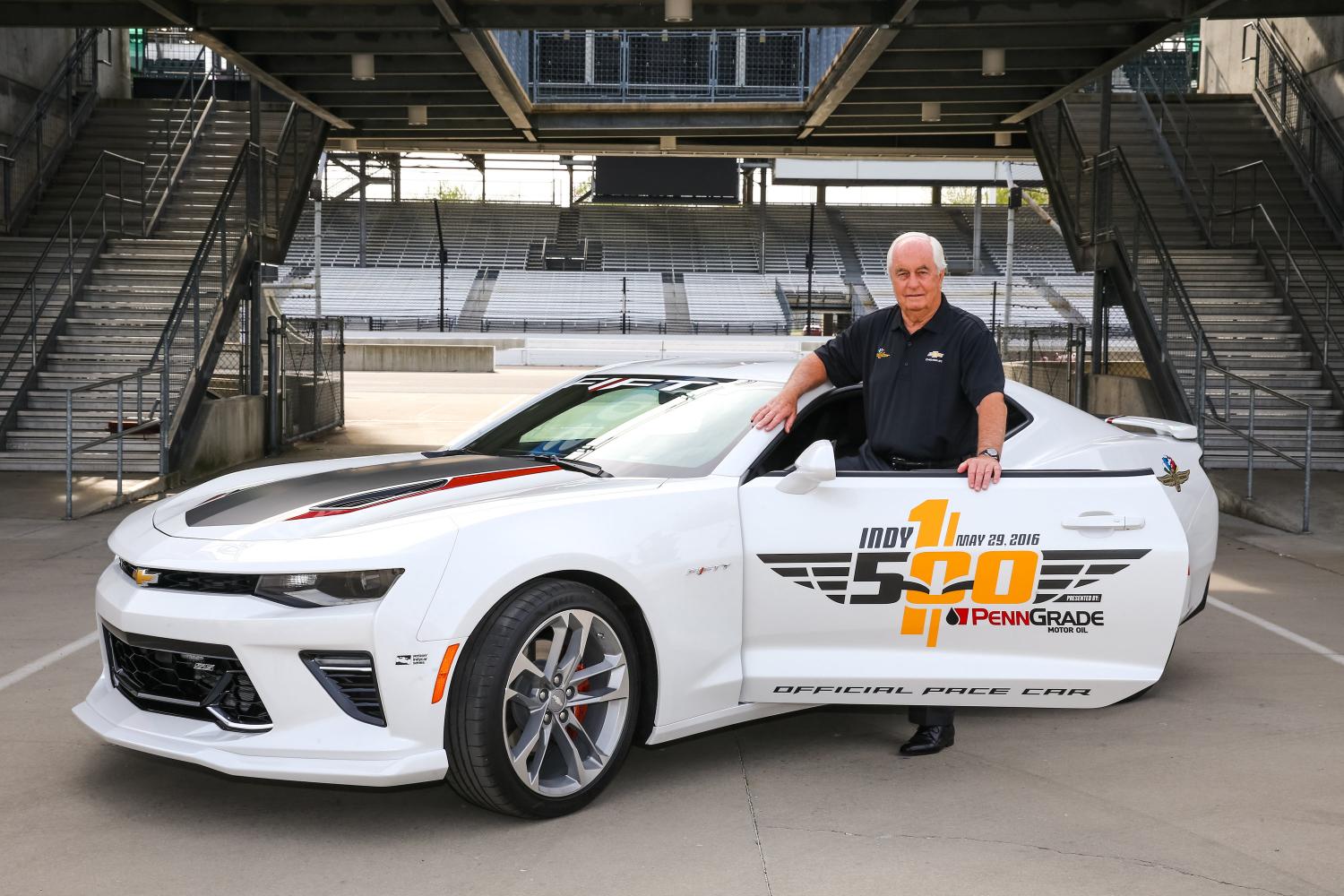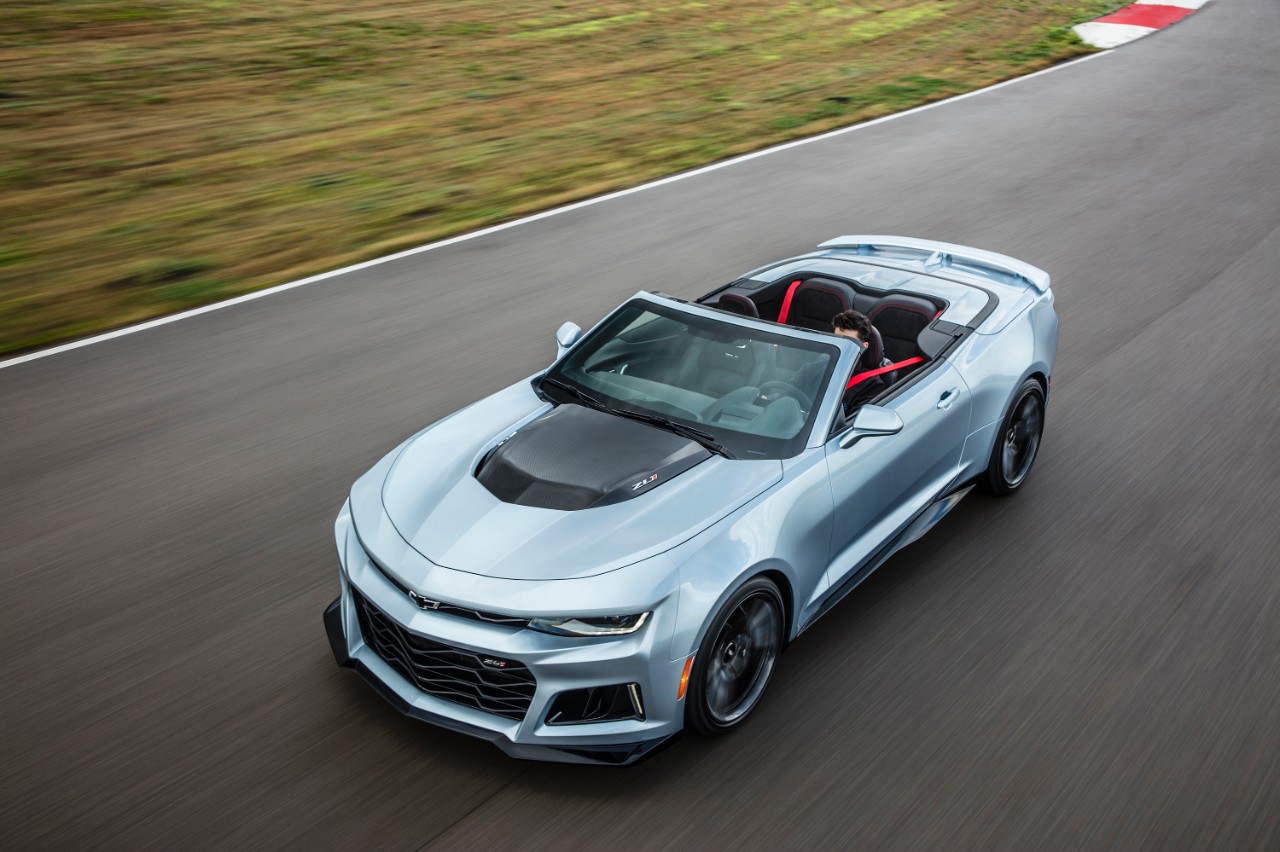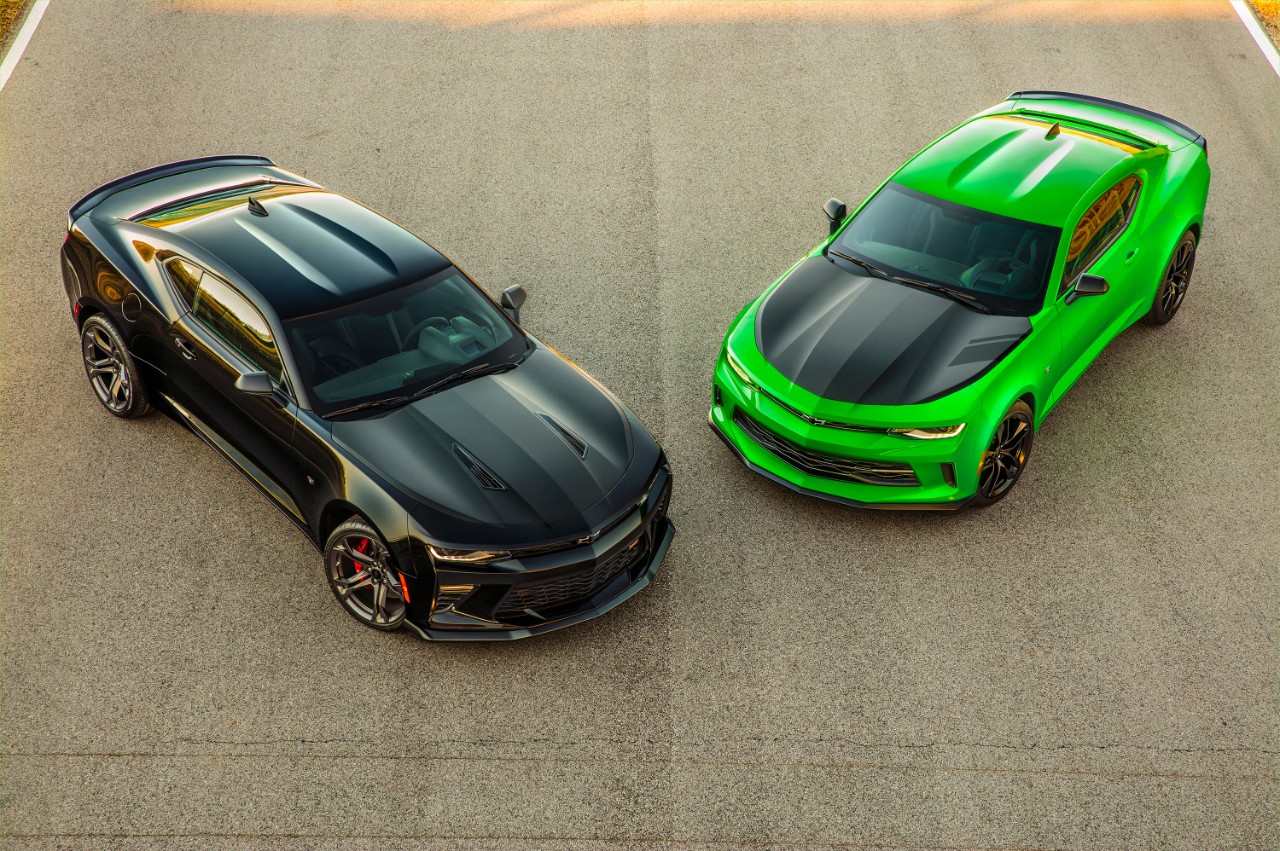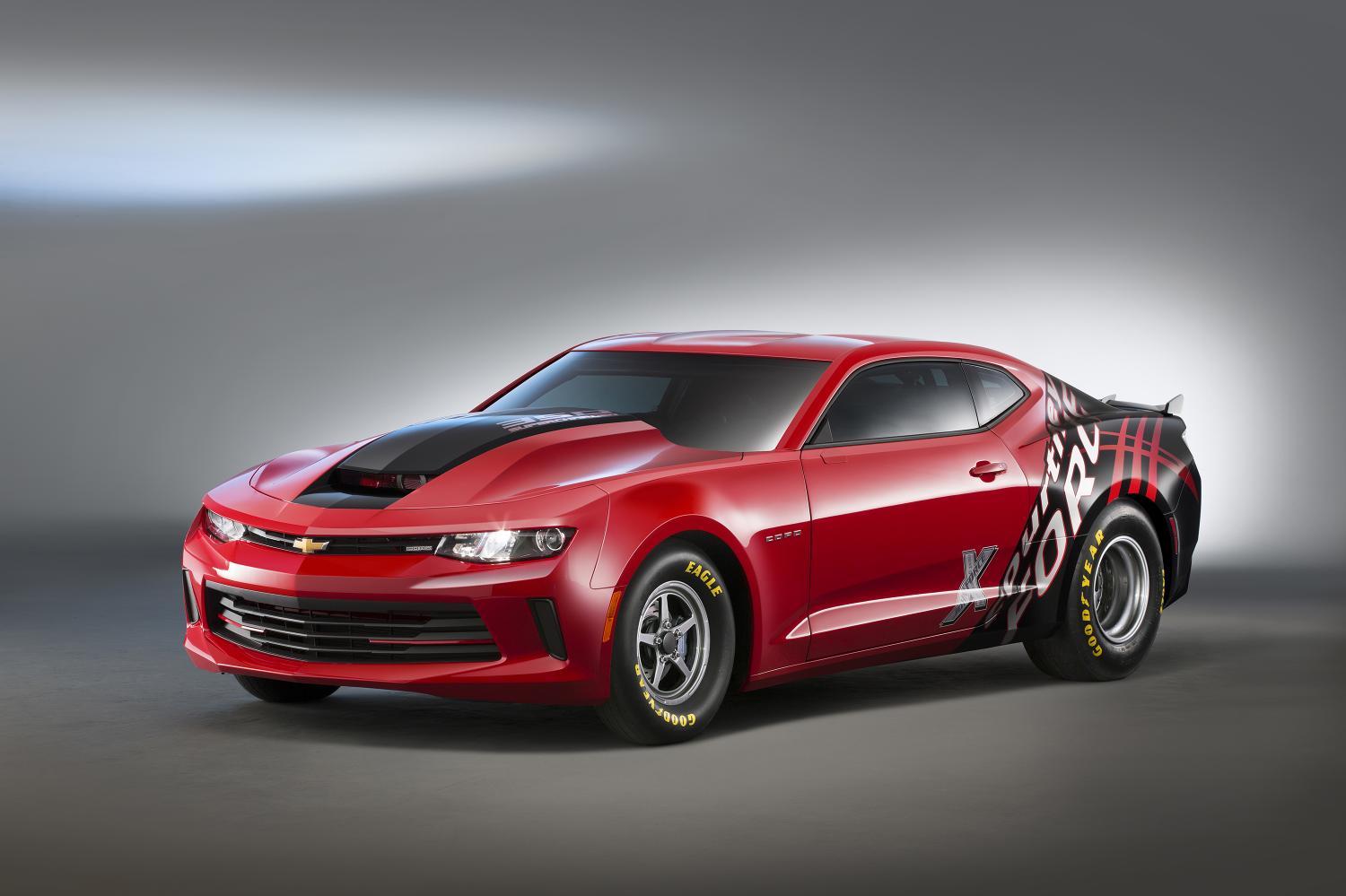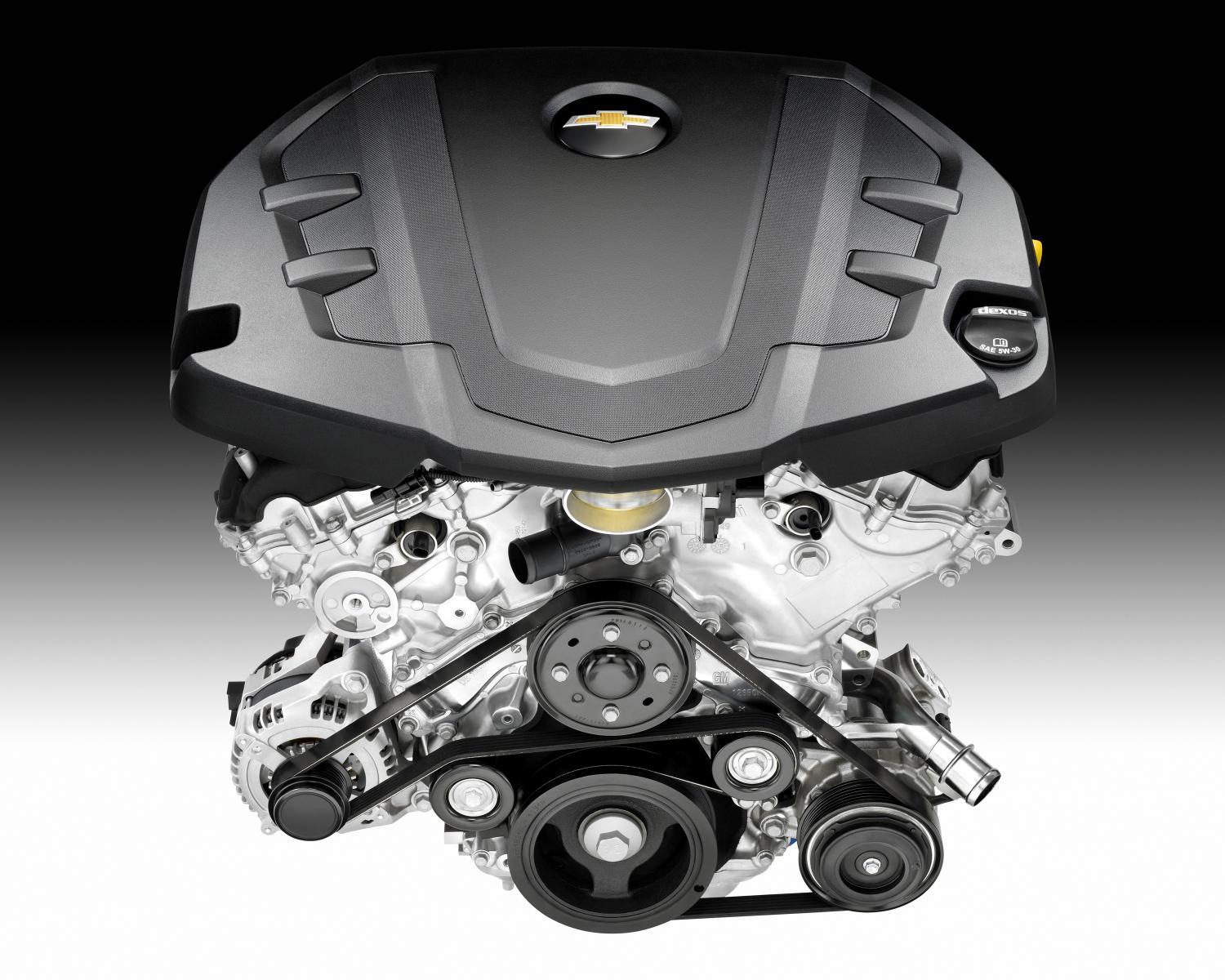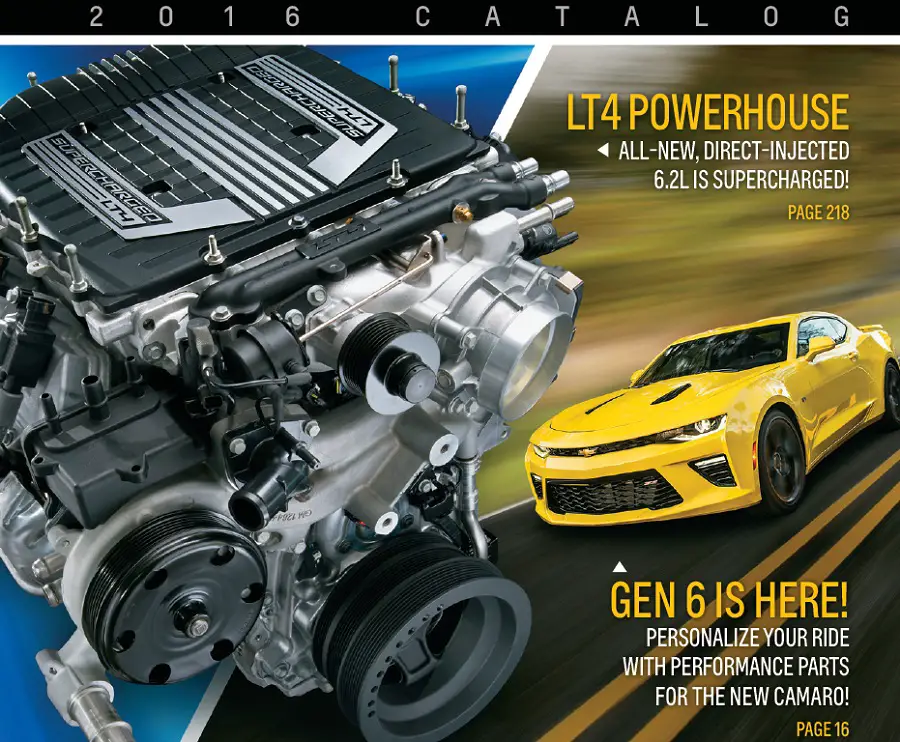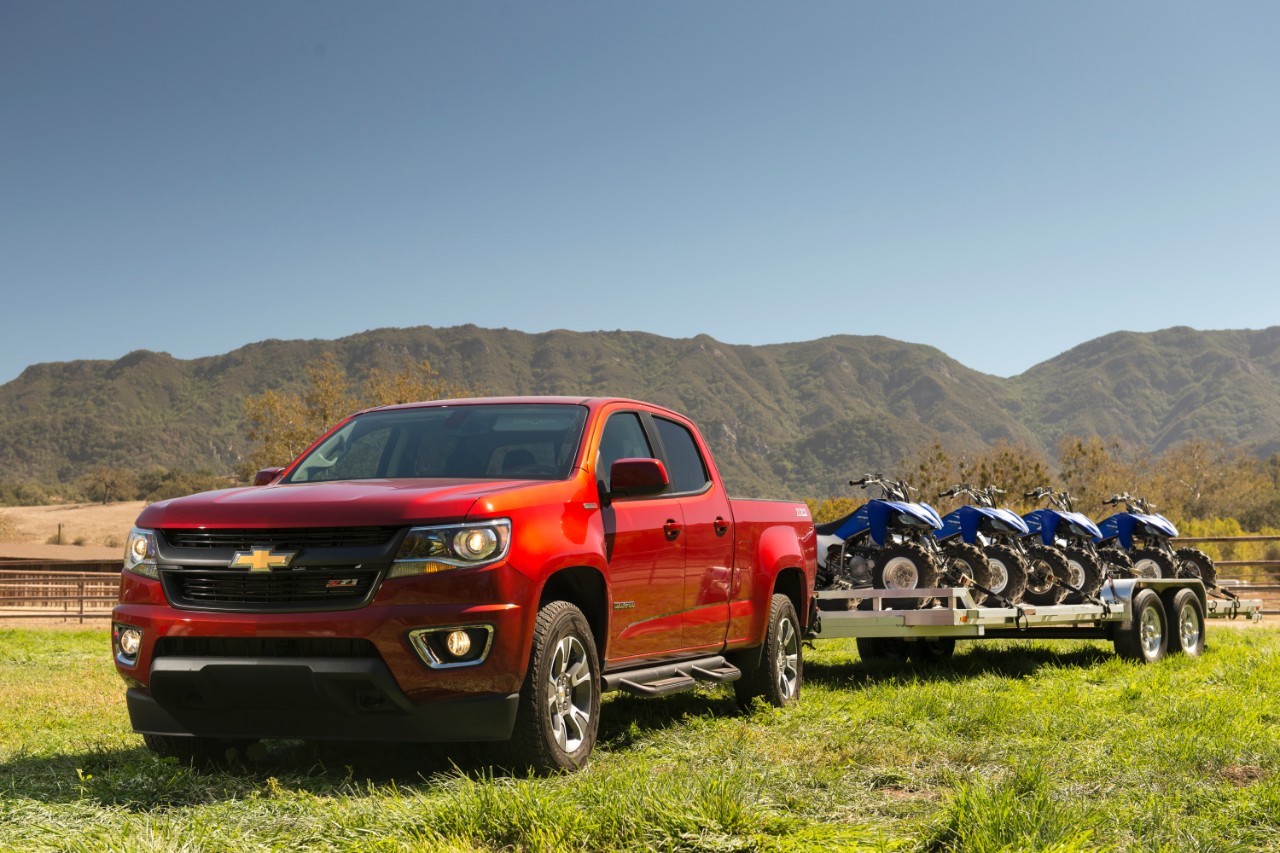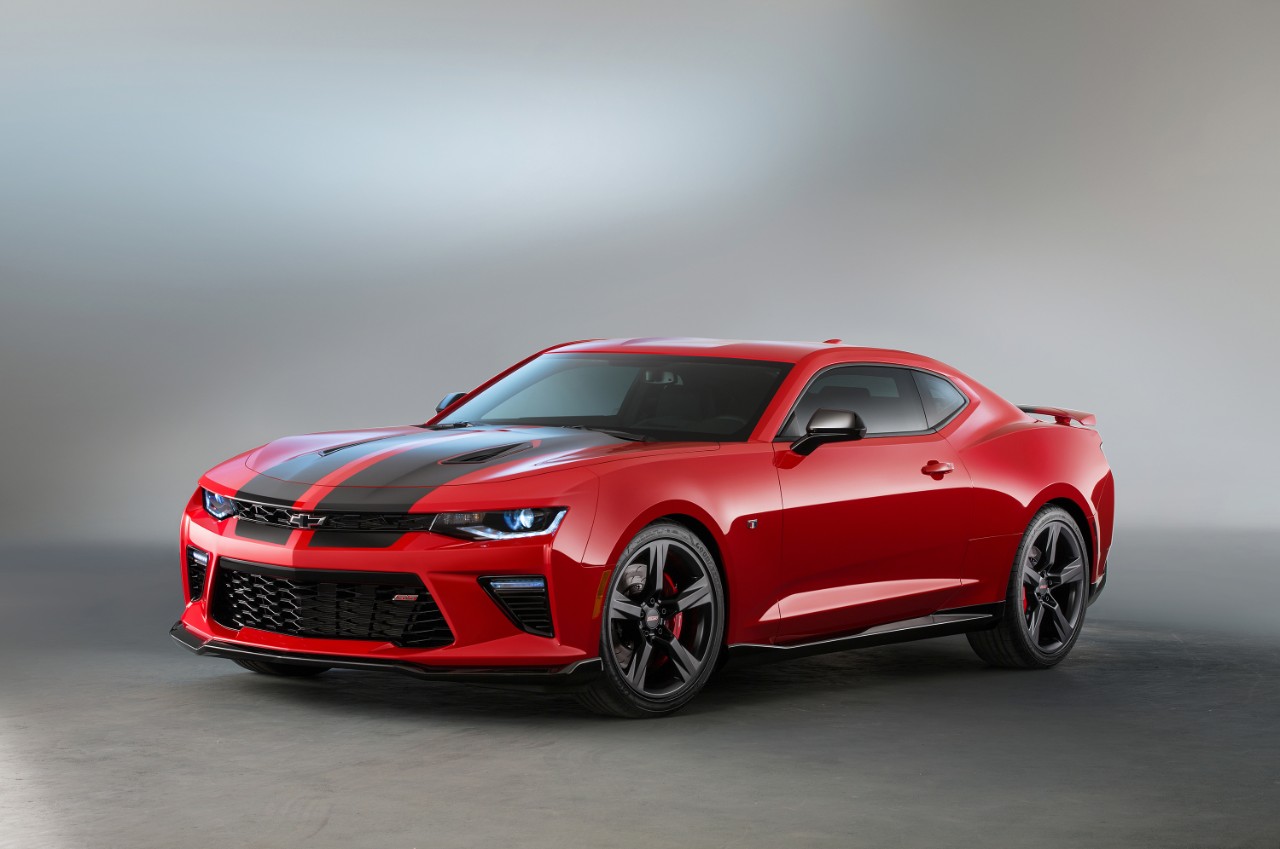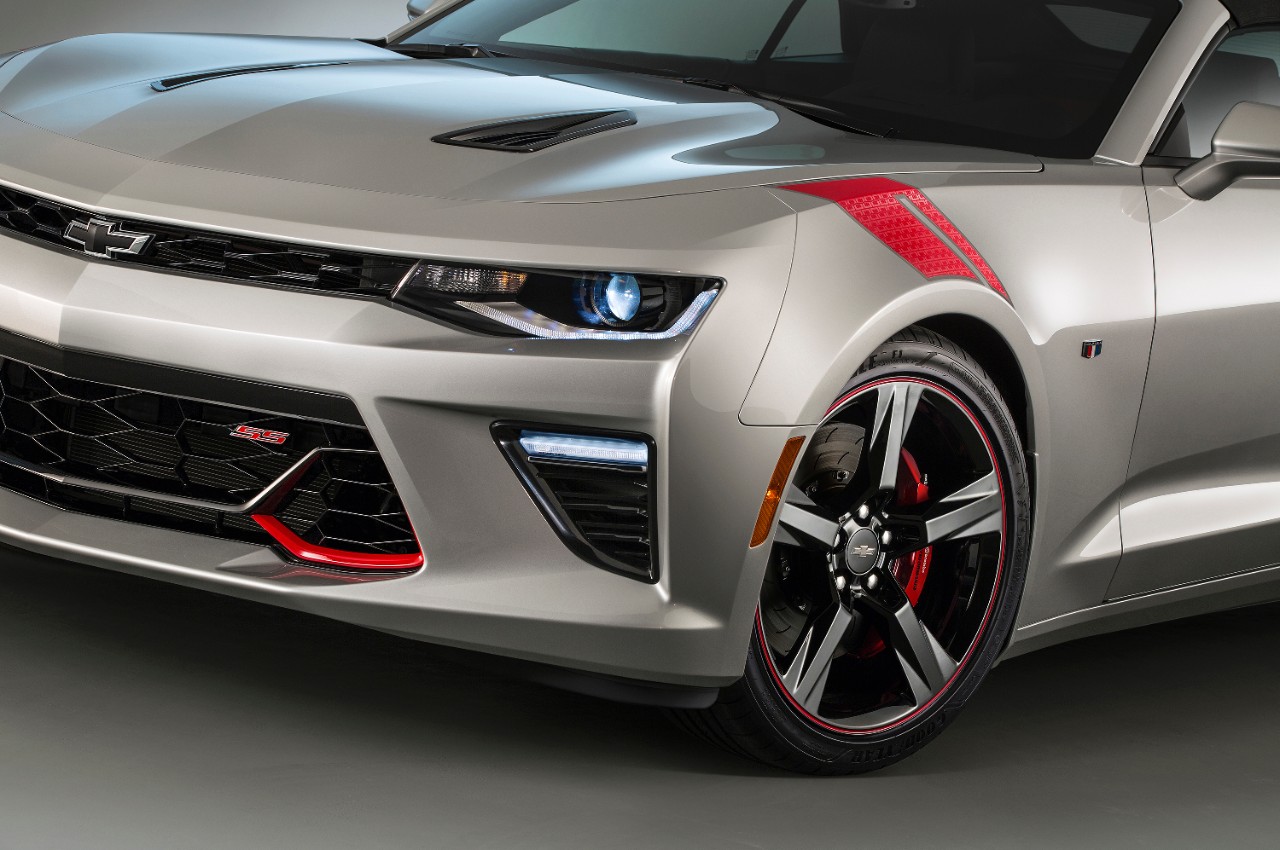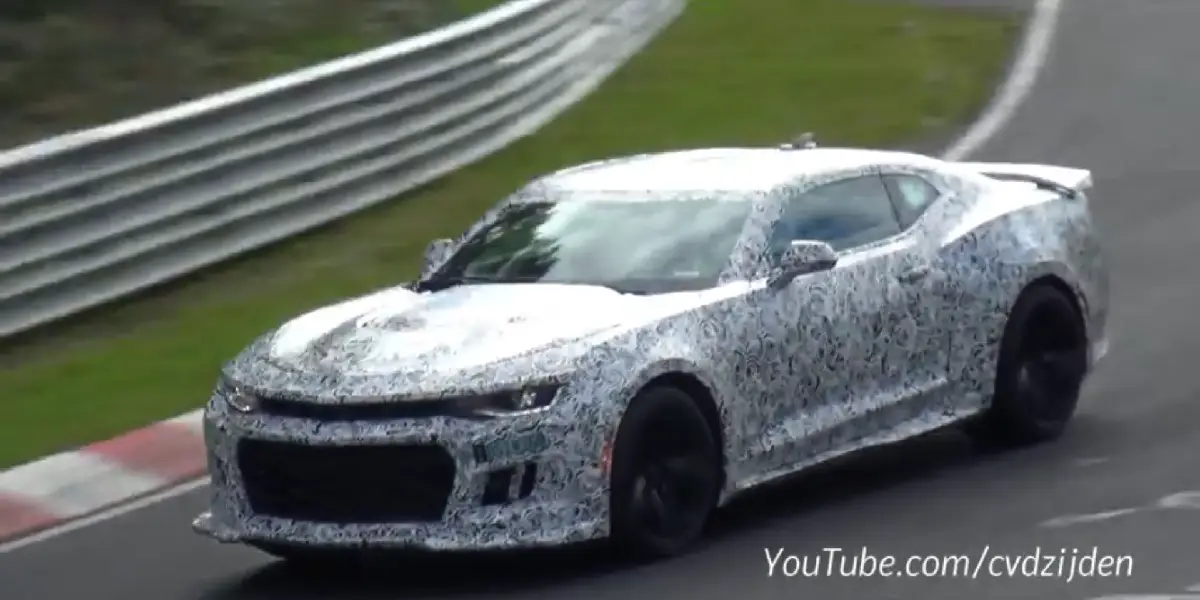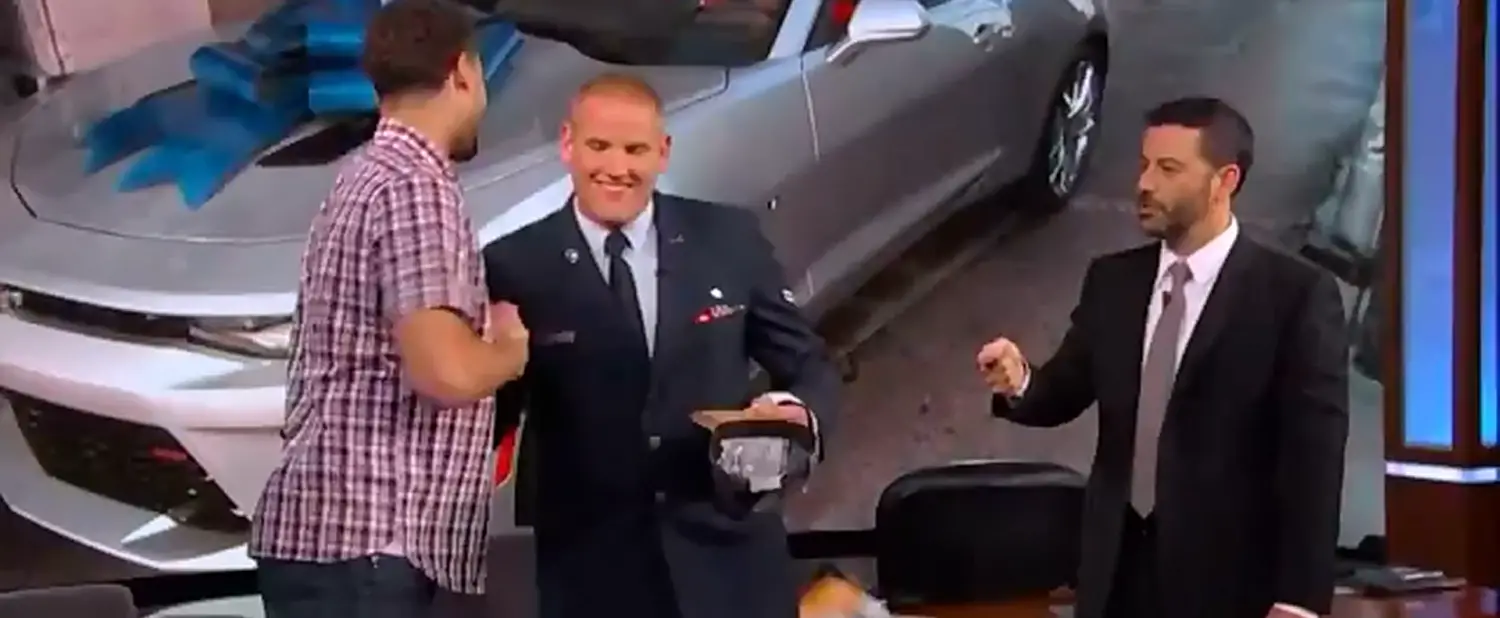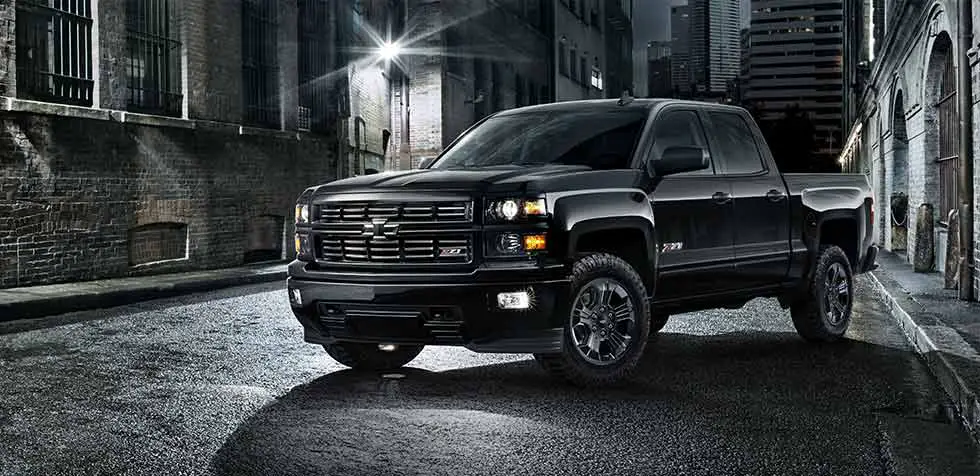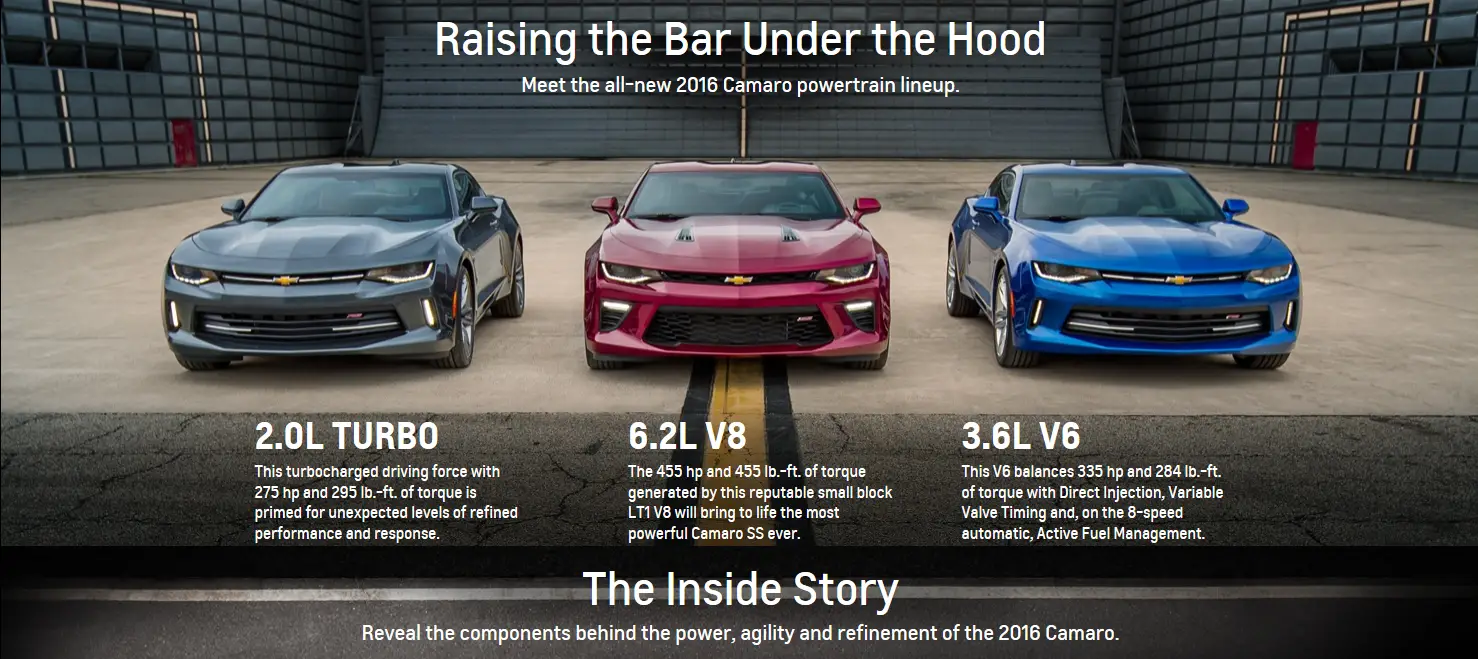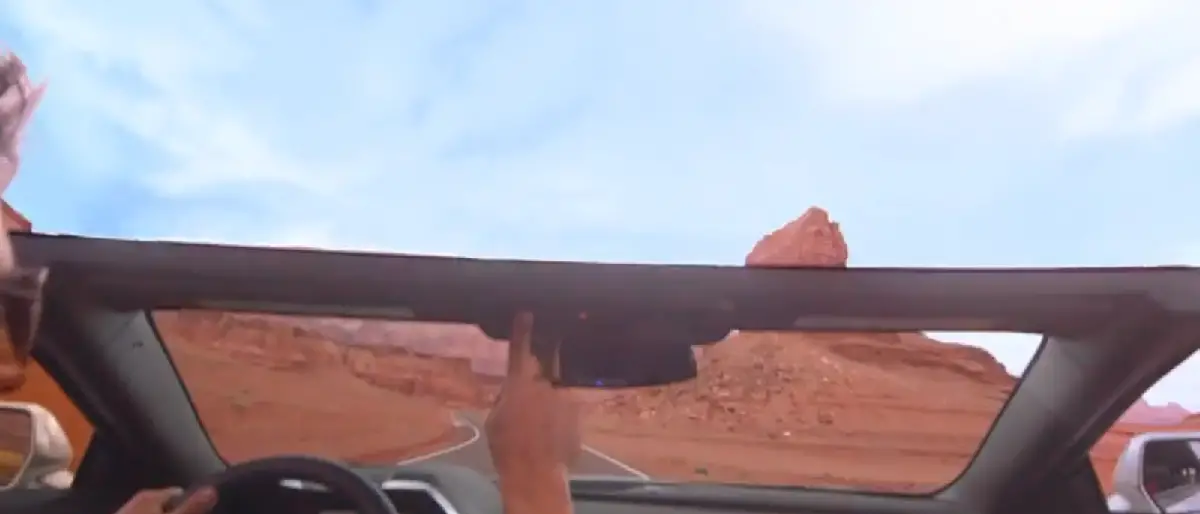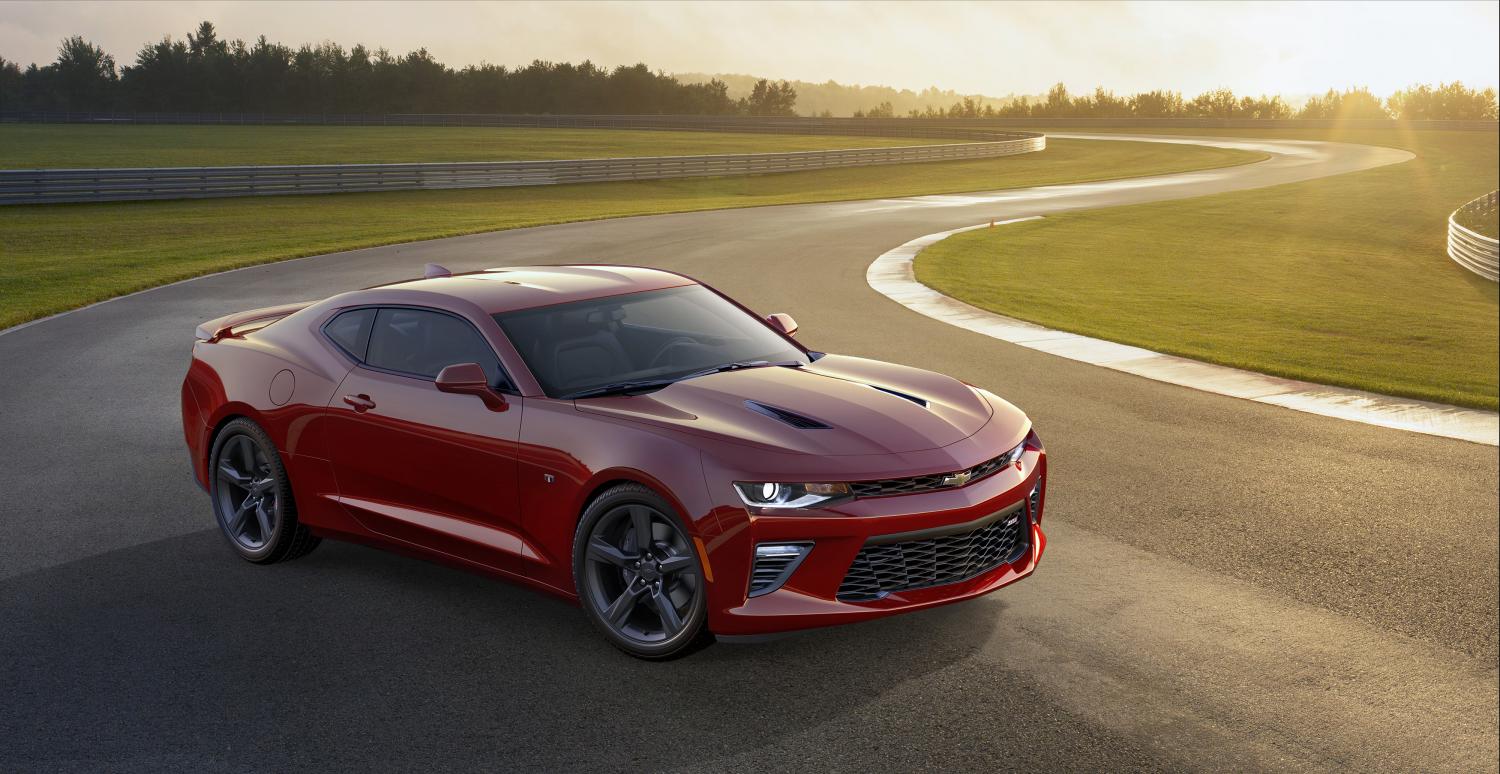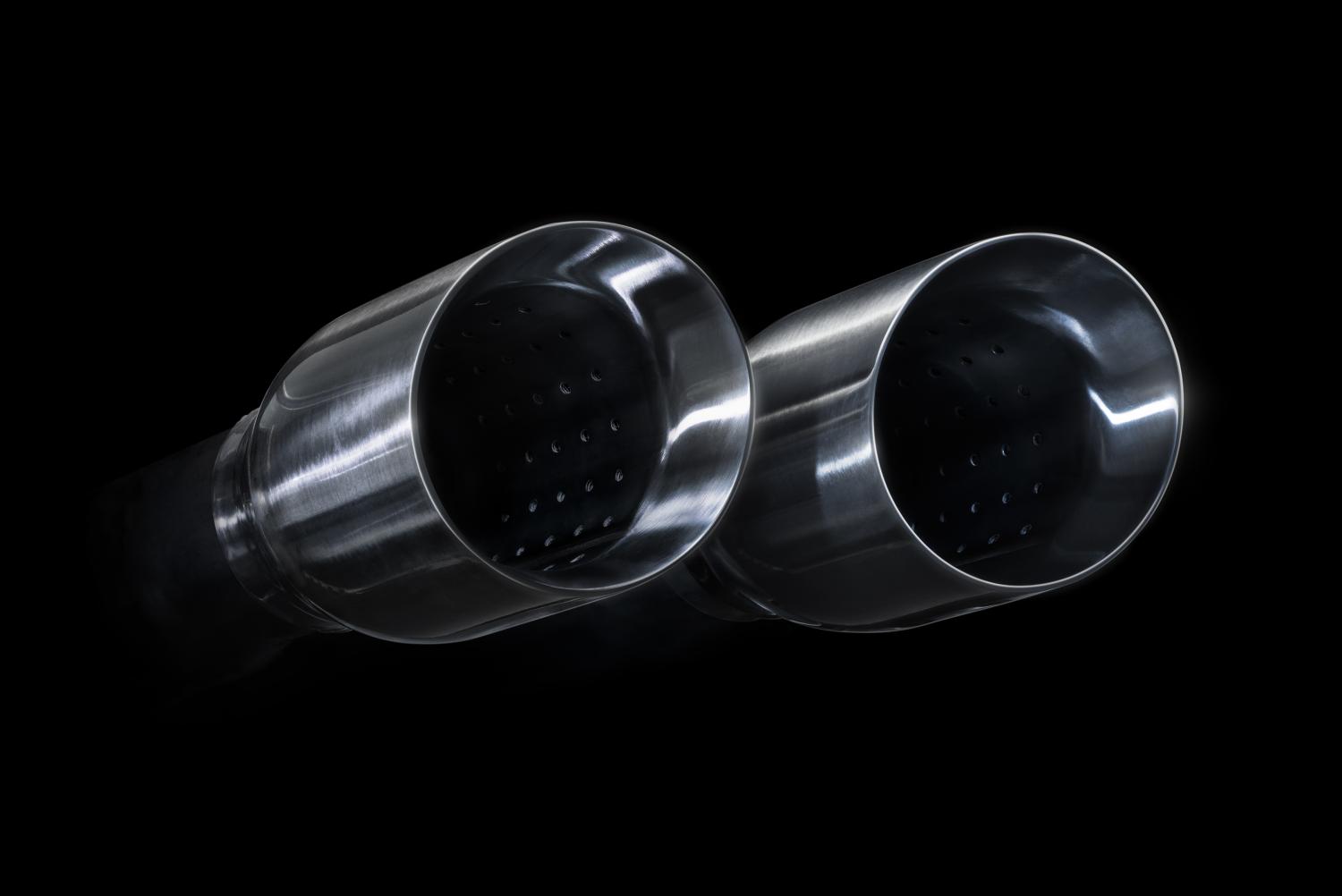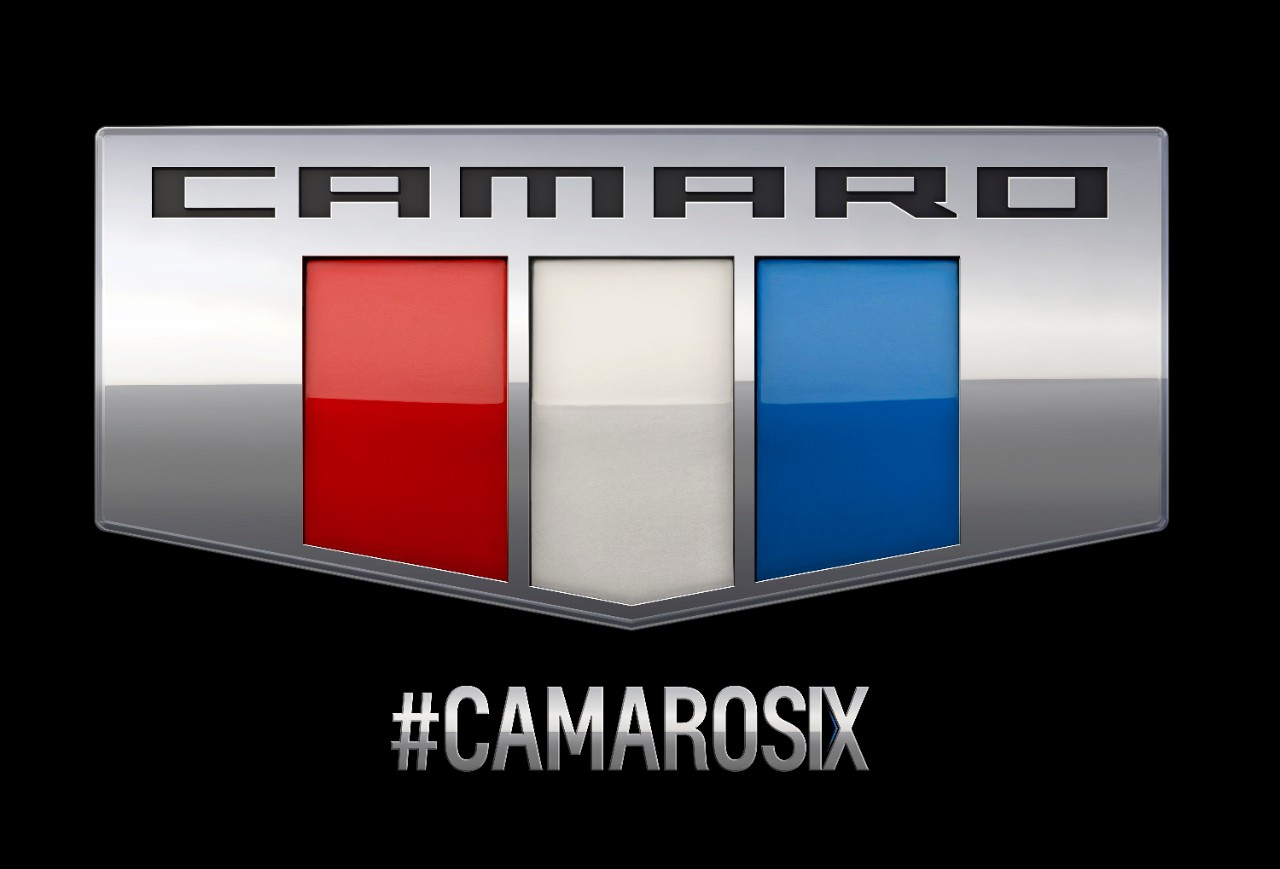Search the Community
Showing results for tags 'camaro'.
-
John Goreham Contributing Writer, GM-Trucks.com 1-29-2019 Chevrolet has added the new 10-speed automatic transmission to its hottest Camaro, the ZL1 1LE. GM says that experienced racers can shave seconds off lap times on longer high-speed circuits with the new automatic by comparison to the 6-Speed manual. Although our staff has not tested this generation of the Camaro ZL1, we have tracked the prior generation with the manual. It was for sure the limiting factor in quicker times for this writer. By comparison, we drove the Lexus RC F with its race-tuned 8-speed auto and were amazed at how well modern track-tuned automatic transmissions can match the gears to the particular needs of the vehicle at any given point on the track. These modern automatics rev-match downshifts and wil keep the vehicle at the perfect point in the RPM range for maximum thrust in all scenarios. “This transmission is optimized for speed,” said Camaro Chief Engineer Mark Dickens. “With unique Track Mode calibrations and 10 gears, you are always in the perfect gear when rolling on or off the throttle. You may not be a professional race car driver, but now you can shift like one.” Steve Majoros, director of Chevrolet passenger car and crossover marketing, expanded on that, saying, “Adding an automatic transmission is another example of the Camaro portfolio delivering what customers want. This ultimate 1LE is another appealing option that is true to its racing heritage.” The new 10-speed becomes available on the Camaro ZL1 1LE in February. What say you GM-Trucks faithful? Would you opt for the automatic in a car you planned to track, or would you prefer the 6-speed stick?
-
John Goreham Contributing Writer, GM-Trucks.com 7-18-2018 Alex Bregman, the 2018 Ted Williams Most Valuable Player, chose the new Chevrolet Camaro SS Coupe during the All-Star Game MVP award ceremony presented by Chevrolet at Nationals Park in Washington on Tuesday night. He had the choice of the Camaro or a Colorado ZR2. Bregman hit the game-winning home run in extra innings that led the American League to victory. It was his first All-Star Game. “Bregman set a great example for baseball fans and especially our kids by hustling hard for the entire game and demonstrating exceptional teamwork — essential qualities to win on the field, in the classroom, and in life — and that is why Chevrolet is proud to present the MVP award,” said Brian Sweeney, U.S. vice president of Chevrolet. Which vehicle would you have chosen GM-Trucks.com members? There is no wrong answer.
-
Zane Merva Executive Editor, GM-Trucks.com 4/9/18 Say hello to the refreshed 2019 Chevrolet Camaro. Sporting an all new front end and rear tail lights, the updated pony car just might be an acquired taste. Whether or not the updated design is appealing to look at (we're divided here at the GM-Trucks.com office), the revised 6th gen is ready to roll with new features and a turbocharged 1LE track model. Chevrolet has a decent update in their press release, so we've copied it here instead of just regurgitating it for you: CHEVROLET INTRODUCES BOLD 2019 CAMARO New designs, available tech and first-ever Turbo 1LE energize broader lineup DETROIT — Chevrolet today introduced a reinvigorated 2019 Camaro lineup with distinctive designs, new available technologies and the first-ever Turbo 1LE. “Lauded since its introduction for its balance of driving fun, refinement and value, the restyled 2019 Camaro reaches even higher with more of the design, technology and choices that customers want,” said Steve Majoros, Chevrolet marketing director for Cars and Crossovers. “It’s a performer with few competitors and a pillar of Chevrolet’s energized car lineup.” Highlights include: Camaro SS now offered with 10L80 10-speed paddle-shift automatic transmission featuring custom launch control and line lock Chevrolet Infotainment 3 systems, including available navigation New available Rear Camera Mirror* New available Forward Collision Alert* Performance-driven design The 2019 Camaro’s updated designs are not only striking but also help to improve performance. For instance, the grille details and hood and fascia vents were designed for optimized air flow, either to cool components or help minimize drag or lift. Camaro designers follow the mantra that all elements must not only be beautiful but also enhance performance. Design highlights include: New front-end styling with distinct differences between LS/LT, RS and SS, including the fascia, grille, LED dual-element headlamps and reshaped hood (ZL1 retains its airflow-optimized front-end styling) SS-specific front fascia with “flowtie” open bowtie grille emblem and aero-enhancing air curtains, specific headlamps with new LED signature and extractor-style hood RS Appearance Package available on LT adds unique polished black grille with Galvano Chrome lower inserts, new LED headlamps with LED signature light bar, specific rear fascia with rear diffuser and 20-inch wheels New rear fascias for all models, with specific diffusers on RS and SS when equipped with Dual Mode Exhaust New LED taillamps with a more sculptured evolution of Chevrolet’s signature dual-element design; red lenses are featured on LS and LT, with RS, SS and ZL1 featuring dark-tinted neutral-density lenses New 20-inch wheel designs on RS and SS Turbo 1LE The new Camaro Turbo 1LE joins the V6 1LE, SS 1LE and ZL1 1LE to round out Camaro’s lineup of 1LE track stars. Leveraging the impressive performance and ideal weight distribution enabled by Camaro’s 2.0L turbocharged engine, the Turbo 1LE comes exclusively with a six-speed manual transmission and a tailored chassis package derived from the V6 1LE to offer track-capable performance. Highlights include: FE3 suspension with larger diameter front and rear stabilizer bars, specifically tuned dampers, stiffer rear cradle bushings and cross-axis ball joints in the rear tow links that enhance lateral stiffness Split front/rear summer-only tire sizes: P245/40R20 (front) and P275/35R20 (rear) 2.0L turbo engine with 275 hp (205 kW) and 295 lb-ft of torque (400 Nm) Brembo brake package with low-metallic performance pads Nearly 50/50 weight balance Driver Mode Selector with Sport Mode and new Track Mode; Competition Mode (within Sport and Track Modes) includes performance instrument readouts, launch control, shift lights and more Standard sueded flat-bottom steering wheel and shift knob plus available Recaro seats Camaro tech: next-generation infotainment, rear camera mirror and more The 2019 Camaro offers Chevrolet’s next-generation Infotainment 3 with all-new systems that provide a more personalized experience and a more intuitive interface. They’re the most advanced infotainment systems ever from Chevrolet, with functionality that mimics the latest smartphones and tablets, and cloud connection designed to enhance personalization, available navigation, voice recognition, apps and more. They even allow vehicle software updates to be automatically uploaded over the air. The standard system features a 7-inch-diagonal color touchscreen. An 8-inch diagonal touchscreen running Infotainment 3 is available, including one with navigation. Additional new technology features and enhancements include: Standard Rear Camera Mirror on 2SS and ZL1 models offers a wider, less obstructed field of view using a camera display that eliminates potential obstructions such as rear body pillars or seat headrests; a conventional rearview mirror view is also available Improved standard rear-vision camera system* with a new, digital high-definition camera that offers improved view quality Forward Collision Alert joins Camaro’s roster of available active safety features Enhanced Performance Data Recorder system
- 38 replies
-
- 2019 camaro
- 2019 chevrolet camaro
-
(and 3 more)
Tagged with:
-
Only two days prior we landed in Minneapolis, Minnesota. Chevrolet was launching the sixth generation Camaro in a genuinely unique way. Over six weeks and with the help of around 150 drivers, the brand was going to complete the ultimate road trip, touching all lower-48 states in the US. Chevrolet was out to Find New Roads, through a Find New Roads Trip. We just so happened to be two of the lucky 150 that the company asked to take part in the journey. Starting in Detroit, two groups of Camaro would wind their way through the United States. Nashville, Boston, Miami, Orlando, Dallas, and San Francisco were just a few of the destinations along a route that would finish in Los Angeles. We joined Chevrolet along the longest of the 18 stages in the drive, from Minneapolis to Salt Lake over the course of three days. The path before us stretched a minimum of 1,229.8 miles if we took the quickest route through South Dakota and Wyoming. But we had no intention of going to South Dakota or Wyoming. In fact, while other participants tried to persuade us they couldn’t wait to see the long stretches of grass and plains, visit Mount Rushmore, or even cruise up to Yellowstone on a Northern route, we had another idea. We wanted to plunge south and drive over the Colorado Rocky Mountains. Specifically, the Eisenhower Tunnel at the Continental Divide. To do that, we had to go through Denver. First, we needed a car. Even on the morning of Day One, we had no idea what type of Camaro we’d drive to Salt Lake in. It could be one of four combinations mixing V6 and V8, manual and automatic. Of course, a V8 manual was our first choice, but let’s be frankly honest; we were just crazy happy to be driving any 2016 Camaro. We had flown into Minneapolis the night before and it was spitting snow. Our leg’s group of a dozen drivers and navigators assembled to eat breakfast. Someone, only half jokingly, asked if the cars had snow tires on them. They did not. After breakfast our group was gathered for a safety meeting. Chevrolet explained any speeding tickets would be on us and there were no restrictions other than returning the cars on Day Three in Salt Lake. Basically, as long as we didn’t leave the country and returned it on time, we could drive our Camaro to any place and any distance we wanted. We would book our hotel rooms for the next two nights through OnStar on the fly once we got on the road. The uncertainty of what we would experience over the next few days was overwhelming. It was a very open ended proposition. Finally the moment for everyone to draw keys arrived. Chevrolet tags with vehicle descriptions were dropped in a hat. The real keys were downstairs in the cars, already warming up for us. Josh took his luck at pulling a key tag for us. Those who chose before us steadily smiled as they declared they would drive a Camaro SS. Pretty quickly I was sure we would be driving a 3.6L V6. Josh’s hand fumbled in the hat, pulling up a Chevrolet keychain. As he read at the tag his smile paused. I was concerned. “Camaro…...automatic……..red…...SS”, he slowly read to me. His smile returned. At that instant we knew this was going to be a fun trip. We grabbed our bags and headed to the elevator. Our plan was to put in most of our miles on day one. After all, Nebraska and Iowa, while lovely and friendly places, are not exactly the landscape choice one might a dream to drive a perfected modern muscle car like the 2016 Camaro. It took us over six hours alone to cross Nebraska. It’s quite possible we saw more windmills and cows than other cars along the way. But if there was ever a car to be stuck behind the wheel during a mindless multi-hour straight line highway speed blitz, it had to be the SS we were behind the wheel of. We cut a path through the middle of Nebraska and Colorado at a brisk 85 MPH, although it felt much slower. It was only two hours outside of Minneapolis, nearing De Moines when we settled down and the enormousness of the drive ahead took hold in our mind. We took time to investigate the futuristic vehicle we were hurtling along the highway in. The next generation Camaro we were driving wasn’t even on sale yet , so driving one on the highway got a lot of attention. We would find that anywhere we drove this Camaro, people would do almost anything to get a photo of it. As we and the other drivers around us checked the sixth-gen out it was obvious how much Chevrolet had changed this iconic muscle car. Now based on the same platform as the Cadillac ATS, the all new Camaro is visually smaller and physically lighter. While unmistakably a Camaro the 2016 looks futuristic, almost too good to be true. As a production vehicle it is arguably more stunning than the famous 5th-generation concept car that re-birthed the Camaro just a dozen years ago. Inside the car is just as modern. A huge digital dash cluster adorned our uplevel SS. An 8-inch MyLink system kept us connected with navigation, OnStar, and 4G WiFi. Heated and cooled seats meant our rump would never be uncomfortable. Thankfully, one thing Chevy didn’t downsize was the Camaro SS’s 6.2L V8 engine. While the same displacement, the LS3 has been replaced by the direct injected LT1. Now producing 455-horsepower, the leaner meaner Camaro now drives more akin to a Corvette than the previous generation. Light on its feet, powerful, and confident. It didn’t take long to understand we were driving an ultimate road trip car. We especially appreciated our SS’s magnetic ride and dual mode exhaust. While a quiet Camaro is a downright shame, so is a loud exhaust that drones and hurts your ears. Chevy has developed a system that can instantly change how loud and aggressive the Camaro’s exhaust note is depending on which driving mode you select. The same system drives the suspension’s magnetic ride shock absorbers. This allows Chevy to present a comfortable, quiet touring vehicle when the driver needs it and a loud, super handling performance car when the driver wants it. Up until 2016, this technology has only been available on the Corvette. Better yet, a driver can completely mix and match exhaust, suspension, and steering settings to their individual taste. Cruising through Nebraska knowing more exciting roads lie ahead, we enjoyed the Camaro in its softest and quietest Touring mode. In any other car, this would have been a brutal drive. No outside stimulation, nothing to see, and because of the distance between rest areas, you better have a close eye on your gas gauge at all times. In the Camaro, this drive was a mild inconvenience. Point and shoot, we steadily moved west towards our destination. After 900-some-odd miles behind the wheel, we pulled into downtown Denver 13 hours after we left Minneapolis. Finally, it was the end of Day One but at that moment it felt as if it had been a week. I looked back inside and handed the keys to the valet. Our trash, bags of snacks, fast food trash, and water bottles sparked memories of the places we had stopped along that day. We headed inside to sleep, too tired to clean out the car. It was dark and our eyes burned from focusing on the road all day. Only the ability to completely extinguish all interior lighting, aside from the heads-up display made things easier. Mile markers and dotted highway lines flashed in my peripheral vision, even as we walked into our hotel. As the sun rose on day two, our bodies were finding it hard to adjust. Leaving home in New Hampshire, we gained an hour when we landed in Minnesota. Somewhere in Nebraska on Day One we gained another hour. To make things worse, on day three we would gain another hour when we traveled to Vegas(to attend SEMA) and gain yet another hour when the clocks adjusted the evening we arrived in Sin City. A four-hour gain in four days isn’t too bad but combined with the amount of driving we were putting behind us, combined with the constant change in scenery, made for a pretty intense head-trip as we progressed along our way. None the less, after enjoying a good night’s rest, we walked through downtown Denver looking for breakfast on the morning of Day Two. We could barely see our target in the distance just beyond the city. Rising thousands of feet above us but obscured in clouds, the jagged and crisp edges of the Rockies. As you can imagine, those are exactly the roads one dreams about when behind the wheel of a Camaro SS. And the day ahead of us was going to be a fun jaunt west to somewhere around Vail for the night. We would explore the mountain roads that surrounded Colorado's famous ski area. That schedule would mean another leisurely drive on Day Three to the Salt Lake Airport. It was a pretty slick plan that would make the long drive on Day One entirely worth it. However, while eating breakfast at a local restaurant we started to check on our route’s conditions. We quickly realized we had a problem. Ice cold overcast weather in Denver equalled snow at altitude just to our west. It was bad. Our route along Interstate 70 was closed to all vehicles who did not have chains, snow tires, or four-wheel-drive. Our Camaro SS had a great many things, except for those. In late October on the day before Halloween, it was cutting it far too close to cross the continental divide with performance summer tires. This entire idea was looking misguided. A change in route now would be a major blow to the entire reason we visited Denver in the first place. Unfortunately, the snow to the west of us meant we had exactly two options. Choice one would take us north of the mountains to spend a night in Wyoming, This unfortunately, would be a huge bail on our original plans and the entire reason why we hauled ass across Nebraska on Day One. On the other hand, there was no way we were going west through Colorado, even later in the day when the snow was supposed to pick up in intensity. After a few minutes of mulling over our northern option while wearily eating breakfast we couldn’t bring ourselves to abandon our plans. A quick check of the weather for Day three confirmed we may have better luck in 24 hours. After some debate we picked option two. We agreed to stay another night in Denver and use the day to explore. That would set Day Three up to be another long day of driving but we frankly didn't care. We would give ourselves another chance at crossing the mountains tomorrow. With the keys to access 455-horsepower in our pocket, we headed back to the hotel with a smile on our faces and an expeditious feeling in our hearts. As we picked up the car from the hotel Valet, he asked where we were off to. “Estes Park” Josh explained, as the 6.2L V8 burbled to life. The entire hotel entrance couldn’t help but direct their gaze at our extremely red sports car as we pulled onto the street. “Is that the new Camaro?” we heard someone ask, but it was too late to answer with anything but a full throttle run to the next stoplight. Back in Minneapolis, Chevrolet had provided us with a list of places we could visit along our way to Salt Lake as we headed out on our trip. Teams had the entirely optional task of visiting one or all of these points of interest, checking into social media along the way for proof. With a route spanning five states, hitting more than one or two would be an impressive task, so we settled with hitting up just one and making it count. You see, the brand had also hidden a prize at one of these points of interest and we had a pretty good idea we knew which one. Our only hint was that visits to out of the way places would be rewarded. Luckily for us, already being far off the quickest route, the most remote location of interest was just around the corner. Our plan for Day Two was now to visit the Stanley Hotel. The ride north to our destination looked amazing on Google Maps. Twisty roads, mountain passes, and switchback turns were everything a car guy driving his dream car could want. Route 36 wound from Boulder to Estes Park, rising in elevation almost the entire way. After endless hours of highway driving we were ecstatic to finally sample the Camaro in a more appropriate way. We stopped for a photo as we drove through the highest point on our trip and the Mountain pass that looked over the picturesque town. The temperature was dropping and the skies darkened, but so far the weather held. The small upscale looking town dotted the mountain valley below us. After a selfie with our phones and some more shots with a DSLR, we moved on. The Stanley Hotel is famous as the original inspiration for Stephen King’s, ‘The Shining’. As we drove into town the city and the hotel seemed mingled together. It’s location, slightly above the rest of the town, made it impossible to miss even from far away. It creepily stood watch over the quaint town that surrounded it. Sadly for us, there was heavy road construction at the hotel’s entrance. We slowly poked around on dug up pavement, searching for a good place to get close to the hotel. All we needed to do was check in at the hotel on social media and we would complete Chevy’s requirements. A quick post to Facebook and instagram ensured we would be eligible should the hotel be the virtual “location” of any prizes. Not a minute after our social media check-ins were complete the weather started to abruptly turn. The local news had warned us that snow might move in at elevation at our location later in the afternoon but this was hours ahead of schedule. As the sleet bounced off the hood, we decided sticking too long was not a great idea. We wanted to drive around and see what Estes Park was all about but now we were just concerned with being able to leave. Even worse, we had to drive higher in elevation through a mountain pass to return to Denver. The weather we would experience would be worse before it got better. I cautiously turned the Camaro’s adaptive drive dial to “Snow/Ice”, instantly dulling the throttle response and increasing the traction/stability control. It gave us comfort knowing the car was fine tuned for this exact situation but not enough to stick around any longer than we had to. We cautiously drove over the mountain pass as sleet and rain changed back and forth. The Camaro never once lost its footing. With enough excitement for one trip behind us, we drove lower in elevation and below the bad weather as we entered Boulder. By this time it was nearly two in the afternoon and our stomachs ached from the excitement and our lack of lunch. We used our smartphones to search for food, finding an ultra-hipster burger joint; Lark Burger nearby and affordable.We would end up finding recycled wooden plates, wood decor, cardboard wrappers, and recyclable plastic cups. Oh, and downright amazing,cooked anyway you like, entirely organic burgers and fries. Seriously, check them out if you are ever in the area. Satisfied and full, we spent the rest of the afternoon exploring the roads outside of Boulder on our way back to Denver. That evening we walked out to get dinner and see what a Friday night in Denver looked like. We stopped at the Yard House, known for an uncontested selection of beer with over 100 on tap. The overwhelming options of beer ironically resembled our trip. So much to see, so much to try, so much ground to cover, but with so little time to do it. On the morning of Day Three we nervously checked the weather. Could we make it over I-70? Would the roads be snow covered and restricted? Colorado’s excellent traffic camera network gave us a clean picture of the road ahead of us. The interstate leading out of Denver and over most of Western Colorado was perfectly dry, except for the dozen or so miles surrounding the Continental Divide and Eisenhower Tunnel. That short stretch of highway was definitely covered in snow. It was still snowing. Peering over my laptop in the hotel room looking at traffic cameras, it sure looked like a gamble to drive a Camaro SS in that direction. Yesterday’s sleet was most likely tame in comparison to this. But the ace up our sleeve was that we grew up in New Hampshire driving a 1997 Camaro Z28 year round. A rear-wheel-drive sports car on snow didn’t particularly scare us. After all, the 97 didn’t even have traction control. When we confirmed that no restrictions were in place on I-70 west we packed up, jumped behind the wheel and drove up into the mountains. I-70 quickly rises in elevation as you leave Denver. Technically, at altitude, the SS should have lost a good chunk of it’s horsepower from lack of oxygen. We sure didn’t feel it. The all new 8-speed automatic feeds a river of torque to the pavement with the direct feeling of manual. Paddle selectors on the steering wheel and quick shifts under pressure meant we never once were disappointed selecting the automatic over a manual. Dialed to Track, the Camaro turns up the heat considerably. The steering tightens, the exhaust grows louder, and the car translates far more road surface feeling into the cabin. It’s never harsh and feels remarkably similar to the two-seat Corvette. The long sweeping roads leading up to the Eisenhower tunnel pitched and swerved. At 80 mph the transitions left and right were as good as it gets for an automotive enthusiast on a public US Interstate. This is what we had planned our trip around and it was worth it. However, as we progressed along father the threat of snow began to stare us down in the distance. Snow covered mountain tops inched closer and closer. In only a few short miles, snow banks on the side of the road became substantial. Flecks of snow began to fall and it only got worse the farther and higher we drove. Just as it seemed like we had made a terrible mistake, the Eisenhower Tunnel came into view. We had reached the highest point in our journey and the west/east dividing line for the Continental Divide. After a small respite from the weather we emerged on the other side of the tunnel. The snow was still blowing and roads were even worse. We cautiously slowed our pace even more and held our breath for the next few miles. As the snow slowly receded and the roads once again became dry, we gave ourselves a small high-five. Despite changing our plans we knew the snow had not beaten us. As the uncertainty drifted away, we turned our focus to our last destination. A half dozen hours ahead of us was Salt Lake City. As we settled in and enjoyed the curvy Interstate, the rest of our drive through Colorado was a blur. Hours later as we entered Utah, the larger mountain peaks started to drift into the rear view mirror. A wide expanse of desert plain and straight road once again opened up before us as we covered the last one hundred miles. It was yet another completely unique landscape that was breathtaking to look at. Just after 3pm we pulled up to the Salt Lake City International Airport. Our Camaro’s journey with us had sadly come to an end. 1,608 miles down since we left Minnesota, we were tired, excited, but definitely not ready to give our Camaro SS back. As we gathered our bags and made our way into the terminal, the stories we couldn’t wait to tell began to race through our heads. But we also felt relief and comfort. Not because our long travels were over but because the sixth generation Camaro was a better car than we had ever hoped it would be. This generation is not only the best Camaro ever made, but a better Camaro that we could have even expected. That will continue to make us smile as long as the memories of this amazing road trip will. UPDATE- WE WERE RIGHT Our bet to visit the Stanley Hotel was a winner. We were the only drivers from our leg to visit the Stanley and just as we thought, as the most remote point of interest along the route it was indeed the home to an awesome prize. For our efforts we were handsomely rewarded with two tickets to the 2016 Daytona 500. Even better, these tickets are not for us. The tickets are for one of you. So, it’s time to give one lucky GM-Trucks.com member free 2016 Daytona 500 tickets! We just shared our awesome Camaro road trip story with you. Now we want you to share your memorable road trip story that you took in your Camaro, Corvette, Silverado, Sierra, or other GM vehicle with us! Post your story and photos below and let us know why you want these tickets! We’ll pick our favorite story this Friday, December 4th at 3pm Eastern and announce the winner shortly after. The winner must provide their own transportation and lodging for the trip. These are grandstand tickets to the race only. Also, moderators and staff of GM-Trucks.com are not elidgable but encouraged to share their story. Share our Road Trip with your friends on Facebook, on other GM owners forums, and anywhere you think there are GM vehicle owners who might like a shot at free Daytona 500 Tickets. We can’t wait to hear about your adventures!
- 9 comments
-
- first drive
- wyoming
- (and 19 more)
-
Commenting on Chevy's participation, Mark Reuss, executive vice president of Global Product Development and Global Purchasing and Supply Chain, said, “Chevrolet and the Indianapolis 500 have a long, storied history and it’s an honor to mark the respective milestones of the Indy 500 race and the Camaro simultaneously. It’s also a privilege to have Roger Penske perform the driving duties, as his team has helped Chevrolet earn four consecutive IndyCar manufacturer titles since 2012.” Team Penske is the most successful racing team to have run the Indy 500. Last year, the top four finishers were Chevy-powered, led by race-winner and Team Penske driver Juan Pablo Montoya.
-
Mark Reuss, executive vice president of Global Product Development was there that day and he and I sat together at lunch. I guess if it gets any better that is how. He is a pretty big fan of the new 2017 ZL1, and said this week, “The Camaro ZL1 is designed to excel at everything. It’s a 2+2 coupe offering incredible performance – acceleration, handling and braking – with the highest levels of technology and perfect chassis damping, making it suitable for everyday driving. It will compare well to any sports coupe, at any price and in any setting.” Please read about the new ZL1 here at our recent overview. Chevy is adding just few things to the ZL1 drop-top: Unique 20-inch forged aluminum wheels with 285/30ZR20 front and 305/30ZR20 rear tires Goodyear Eagle F1 Supercar tires with a compound and construction developed exclusively for the Camaro to offer exceptional grip on the track Brembo brakes with six-piston monobloc front calipers – featuring the ZL1 logo – and massive, 15.35-inch (390 mm) two-piece front rotors. Chevy promises the track-ready convertible Camaro ZL1 will be available in about a year.
- 3 comments
-
Our experience with the all new Camaro has been outstandingly positive. Just last fall, GM-Trucks.com drove a 2016 Camaro SS over 1,600 miles from Minneapolis to Salt Lake City in an epic road trip. The SS turned out to be a strikingly composed vehicle. In our time with the last generation Camaro ZL1, we were equally impressed but the vehicle's extra weight made it harder to control on the track. This generation is over 200-lbs lighter. The all new ZL1 will dial this lighter generation pony car up to the proverbial "11". Specialized bodywork on the ZL1 improve aerodynamics and cooling. A larger front splitter, unique rockers, larger rear spoiler and wide front fenders are designed to keep the Camaro ZL1 stable at high speeds. A special "flow-tie" Chevrolet bowtie insignia is open to allow more airflow to the engine compartment. Inside the ZL1 has standard Recaro front seats, a suede flat-bottom steering wheel, and suede shift knob. Chevrolet's performance data recorder (PDR) is also available. The ZL1 also comes with unique 20-inch forged aluminum wheels with exclusive Goodyear Eagle F1 Supercar tires [285/30ZR20 Front / 305/30ZR20 Rear]. Those huge tires will get help stopping with massive 15.35 inch rotors squeezed by six-piston Brembo brakes up front. 11-heat exchangers throughout the Camaro ZL1 make this four-person car track ready straight from the dealership. Pricing and availability have yet to be announced.
- 21 comments
-
- supercharged
- automatic
- (and 9 more)
-
The 1LE is the track-package for the Camaro. In years past it was applied to V8 Camaros (1SS). That will continue in 2017 on the new generation. On the 1SS, the 1LE package includes magnetic ride control, with a new FE4 suspension tuning and a new, segment-exclusive electronic limited slip differential (eLSD), and Goodyear Eagle F1 tires. Optional features will include Recaro seats and a Performance Data Recorder (PDR). Interestingly, Chevy is offering a 1LE package on the 3.6-liter V6 equipped 1LT and 2LT coupes this year. The magnetic ride control is not part of the V6 deal. Instead, the cars get aggressive suspension tuning, standard Brembo brakes and Goodyear Eagle F1 tires. The Recaro seats and PDR will be options. See the full equipment list below. I have a Cadillac CTS4 with the 3.6-liter V6 in my driveway as I write this. It is an excellent on-road engine in cars the weight of the Camaro. I have great respect for that engine and depending upon price levels the 1LE package with the V6 may be a very interesting car. Still, it would be hard to imagine adding a track-capable suspension to a new Camaro given the affordability of the V8 in this car. On the other hand, Al Oppenheiser, Camaro chief engineer says that “In our development tests, the V-6 Camaro 1LE delivers lap times comparable with the previous-gen V-8 model.” This is mostly due to the under-3500 pound weight of the V6 car. What say you GM-trucks people? Would you consider a 2017 V6 1LE if it is as fast as a last-generation V8 1LE? Image Notes: Green car is the V6. Black car is the V8. V6 LT 1LE Package: 3.6L V-6 rated at 335 horsepower and matched with the six-speed manual transmission FE3 suspension components (from the Camaro SS), including dampers, rear cradle mounts, ball-jointed rear toe links and stabilizer bars Lightweight 20-inch forged aluminum wheels with Goodyear Eagle F1 245/40R20 front tires and 275/35R20 rear tires Brembo 4-piston front brake calipers Mechanical Limited-slip differential with 3.27 ratio Standard track-cooling package, with engine oil, differential and transmission coolers Suede steering wheel and shorter-throw shifter Standard dual mode exhaust system Camaro SS fuel system for higher-load cornering capability Satin black hood, front splitter and unique three-piece rear spoiler Unique high flow upper and lower grille with satin black accents Available Recaro seats and PDR video/data recording system. V8 SS 1LE Package: 6.2L LT1 V-8 rated at 455 horsepower, and six-speed manual transmission (automatic transmission not available) Magnetic Ride Control Segment-exclusive electronic limited-slip differential with 3.73 ratio Unique forged aluminum wheels with 285/30ZR20 front tires and 305/30ZR20 rear tires Goodyear Eagle F1 Supercar tires with a compound and construction developed exclusively for the Camaro – offering exceptional grip on the track Brembo brakes with new six-piston monobloc front red calipers – featuring the 1LE logo – and two-piece rotors. Measuring 14.6 inches (370mm) in diameter, the front rotors are 7 percent larger than Camaro SS Track-cooling package, with engine oil, differential and transmission coolers Suede steering wheel with shorter-throw shifter Dual mode exhaust system Recaro front seats with aggressive bolsters optimized for shifting and steering comfort Satin black hood, front mirrors and unique three-piece rear spoiler Satin Graphite front splitter and rear diffuser Available PDR video/data recording system.
-
The second engine is the 2016 Volt's new 1.5-liter range extender. I like it because to me, suffering range anxiety in an affordable car while trying to be green seems ridiculous. GM's Volt idea made sense when Lutz came up with it, and it makes a lot more sense now that electricity is more expensive as a fuel than is gasoline. Mr. Winter said of the Volt's "propulsion system", “General Motors has taken what already is the most innovative and disruptive propulsion system in the auto industry and made it lighter, stronger and a lot more fun to drive. In fact, the new Voltec system delivers the impossible: an exciting electric car with zero range anxiety.” How about that? Two stories in a week about engines and we still have not mentioned the Duramax - Oops!
-
-
- chevy
- performance
-
(and 1 more)
Tagged with:
-
The 2016 Motor Trend Car of the Year is the all-new 2016 Chevy Camaro. In its testing Motor Trend drove both the RS and SS versions of the Camaro. Yes, the SS is the one most people dream about, but the RS impressed Motor Trend. “The performance you get out of this six-cylinder is amazing,” he said. “It might as well have an SS badge on it. I can already hear the fanboys: ‘My RS does 0-60 mph in 5.3 seconds, handles better than an ATS, and gets killer mileage.’” Still, the V8 engine in the Camaro is what makes it an exceptional car for value and performance. Motor Trend pointed out that "...the new SS is nearly as quick in a straight line (0-60 mph in 4 seconds flat, quarter mile in 12.4 seconds) as the outgoing and more powerful Z/28. Lower weight plus the superlative Alpha bones make handling measurably mega; the SS runs our figure-eight track in 24.1 seconds, two-tenths off a Porsche 911 Carrera 4S." The Camaro returned better fuel economy in Motor Trend's real-life testing than did the Mustang or the Challenger. Motor Trend also pointed out that the Camaro is a world-beating value, saying, "A 275-hp turbo for $27K, 335 horsepower for $28.5K, or 455 hp for $37K? This isn’t rocket science, people."
- 3 comments
-
Want to meet up and join us in Minneapolis, Minnesota on Wednesday night? We'll be at the National Sports center from 6pm-9pm. The first 200 people who show up get extra prizes and gifts from Chevrolet. For more infomation visit: www.findnewroadstrip.com Otherwise, check back on Wednesday afternoon as we start out adventure through the heartland of the US and over the Rocky Mountains! Interested in SEMA, too? We're heading there right afterwards...
- 16 comments
-
- findnewroads
- findnewroadstrip
- (and 11 more)
-
The Red Accent starts with a Switchblade Silver Metallic convertible Camaro with a Adrenaline Red leather interior. The unique look features red “hash mark” graphics and the now popular black bowtie emblem. The red theme continues under the hood with a red engine cover. 20-inch 5-Spoke Gloss Black wheels with Red Outline Stripe complete the look. Chevy also lowered the car, added a Chevy Parts air intake and Brembo front brakes with six-piston calipers. Inside, Chevy added red knee-area padding, door inserts, mats and a center console cover. The Black Accent Camaro starts out with a red Camaro SS with black rally stripes, a black bowtie and blacked out lighting. The black 20-inch 5 Split Spoke Low Gloss Black Wheels and red Brembo brake calipers compliment the look perfectly. Inside the jet-black materials are offset with red trim. Which would be your choice?
-
Stone's story of the fight is pretty spooky. After recounting how he decided he "Wasn't going to die sitting down" and ran to tackle the terrorist, Stone told Kimmel that not only did the inept wanna-be killer point an AK at him and pull the trigger (malfunctioned), after they were locked up wrestling the terrorist also pulled out a handgun and pointed it at Stone's head and pulled the trigger (second malfunction). Handguns can be tricky, but AKs are not known to be difficult weapons to operate, nor do they fail very often. https://www.youtube.com/watch?v=Uj5nm24gCQY
-
- 1 comment
-
- camaro
- illunimated
-
(and 1 more)
Tagged with:
-
Also, General Motors has updated its ordering book for dealers. This means that orders will soon be accepted at dealerships and that inventory will begin to arrive soon. One thing we noted in the information available is that all the wheels for the new Camaros are aluminum - no steel wheels with covers like on some past base models.
-
- 1 comment
-
- camaro
- convertible
-
(and 2 more)
Tagged with:
-
John Goreham Contributing Writer, GM-Trucks.com 6/22/2015 Chevy has us looking forward to the new Camaro Convertible's "drop date" of this Wednesday. The tease video is pretty cool and it explains one of the Camaro's cool convertible tricks without using words or text. If you like muscle car convertibles this is one to watch. In our recent story about the Buick Cascada, Rayanbabz71 commented "Pretty cool convertible design, would I want one? No, the camaro fits the bill for me." Well here you go!
- 1 reply
-
- camaro
- convertible
-
(and 2 more)
Tagged with:
-
John Goreham Contributing Writer, GM-Trucks.com 5/16/2015 Today Chevrolet launched the all-new 2016 Camaro. GM says there will be six new powertrain offerings starting with a 2.0-Liter turbo that will go 0-60 MPH in under six seconds, and including a Camaro SS with 455 hp. Highlights of the new car include a leaner stiffer chassis and driver selectable drive modes. The Camaro is also 200 pounds lighter depending upon trim, and for the first time magnetic ride control will be available on an SS trim. GM says that the '16 Camaro is so new "Only two parts carry over from the fifth-generation Camaro to the new Gen Six: the rear bowtie emblem and the SS badge. We'd like to know what you think of the new look. Comment below. Download attachment: camaro_2016_2.jpg Download attachment: camaro_2016_3.jpg Attached Images: Click here to view the article
-
According to an announcement today, the new Camaro, even in its mainstream trims below the SS, will have selectable drive modes. Throttle progression, steering, stability control and other vehicle settings will be adjustable and grouped into Snow/Ice, Tour and Sport modes. SS models will also get a Track setting. Chevy is also promising an enhanced dual-mode exhaust system which drivers will be able to adjust from stealth to track sound settings. The new Camaro is set to be revealed May 16th.
-
- new
- driver aids
-
(and 1 more)
Tagged with:
-
As evidence that the Camaro really is a new vehicle Chevy announced that 20% of the 6.2-liter, V8 engine's components were specially made for the Camaro (as opposed to the Corvette or CTS-V). GM also says that fully 70 percent of the components in the new Camaro are unique to it and not shared with other Alpha platform cars. In other words, it is not an ATS coupe with a cheaper interior (not that we were worried). The new Camaro is exciting for many reasons. The car might benefit from a slightly smaller exterior and the outgoing car simply dominates the global performance coupe field, so the prior generation exits a winner. The Camaro is more than a match for anything even remotely similar in price, and that should continue. If this writer may interject just a bit of opinion here, isn't it time GM stopped with the "Designed to compete with premium European brands" language? Let's be honest. European brands are now trying very hard to compete with the Camaro, CTS, ATS and many other great GM cars. Things have changed.















